 Writing a letter to a stranger is all about trust. To offer your thoughts and opinions, some of which you might never say out loud, is truly relationship building. But there’s also something refreshing about writing to someone who is not fully aware of your daily life, your flaws, the way you look, or how cute your children are. They get a totally different picture of things, which makes the whole thing special. Our relationship took awhile to gain traction, and it was about a year before Michelle and I got to the meat and potatoes of things. Now I feel comfortable writing to her about just about anything, including some things I might never say out loud to people in my daily life.
Writing a letter to a stranger is all about trust. To offer your thoughts and opinions, some of which you might never say out loud, is truly relationship building. But there’s also something refreshing about writing to someone who is not fully aware of your daily life, your flaws, the way you look, or how cute your children are. They get a totally different picture of things, which makes the whole thing special. Our relationship took awhile to gain traction, and it was about a year before Michelle and I got to the meat and potatoes of things. Now I feel comfortable writing to her about just about anything, including some things I might never say out loud to people in my daily life.
All in Crafty
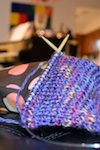 At some point, I notice an anomaly in the sweater — the consequence of knitting while watching TV. I’ve messed up the pattern, miscounted. I consider the damage. How much work would it take to undo four rows of stitches and re-knit? How noticeable is it? In the end, stitch by stitch, I remove the rows. I’ve become quite accomplished at this work of unknitting, even with complicated slipstitches, increases and cables. The piece won’t be perfect (how else would they recognize it as hand-knit?), but I want it to be beautiful.
At some point, I notice an anomaly in the sweater — the consequence of knitting while watching TV. I’ve messed up the pattern, miscounted. I consider the damage. How much work would it take to undo four rows of stitches and re-knit? How noticeable is it? In the end, stitch by stitch, I remove the rows. I’ve become quite accomplished at this work of unknitting, even with complicated slipstitches, increases and cables. The piece won’t be perfect (how else would they recognize it as hand-knit?), but I want it to be beautiful.
 Now, certainly I am grateful for the cheerful mechanic who diagnosed and replaced my broken alternator last Christmas Eve. And I owe a great deal to the tailor who salvaged the almost-brand new red leather shoes I’d spilled jojoba oil on. But that does not diminish my own satisfaction from improvising an oil plug gasket by sewing together part of a leftover ring from a battery-cleaning kit. Nor does it dim the delight of successfully building a new pad for a seatless chair frame I found on the street.
Now, certainly I am grateful for the cheerful mechanic who diagnosed and replaced my broken alternator last Christmas Eve. And I owe a great deal to the tailor who salvaged the almost-brand new red leather shoes I’d spilled jojoba oil on. But that does not diminish my own satisfaction from improvising an oil plug gasket by sewing together part of a leftover ring from a battery-cleaning kit. Nor does it dim the delight of successfully building a new pad for a seatless chair frame I found on the street. I dabble. This is partly to do with a lack of focus and, at times, plain old laziness. But sheer curiosity holds the lion’s share of this scattershot creativity. It’s not enough to enjoy a good book — I want to write good words. To drop five bucks on the counter for an artisan loaf of bread or to savor a craft brew and not experience the process is to leave something incomplete. A question remains unvoiced.
I dabble. This is partly to do with a lack of focus and, at times, plain old laziness. But sheer curiosity holds the lion’s share of this scattershot creativity. It’s not enough to enjoy a good book — I want to write good words. To drop five bucks on the counter for an artisan loaf of bread or to savor a craft brew and not experience the process is to leave something incomplete. A question remains unvoiced.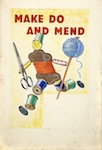 Mending is neither glamorous nor easy, but I’ve discovered it can be a calming antidote to the frantic pace of my everyday life. It requires me to stop in the middle of commitments — a day job and a marriage and freelance assignments — and commutes to focus on one small, tangible thing. There is satisfaction in threading a needle with just the right color of thread and making tiny, precise stitches to close a hole or hold a seam together. I’m always amazed by the strength of those stitches and the sense of accomplishment I feel afterward.
Mending is neither glamorous nor easy, but I’ve discovered it can be a calming antidote to the frantic pace of my everyday life. It requires me to stop in the middle of commitments — a day job and a marriage and freelance assignments — and commutes to focus on one small, tangible thing. There is satisfaction in threading a needle with just the right color of thread and making tiny, precise stitches to close a hole or hold a seam together. I’m always amazed by the strength of those stitches and the sense of accomplishment I feel afterward.Interview Series: MAKING — A Conversation with Carey Wallace
Art in all its forms is intimately connected with every aspect of all lives. We sing when people die. We dance when they get married. Even sports events and video games incorporate music, dance images, theater. The things I make are only my participation in that constant, unstoppable swirl of creation. This world is already beautiful and good. It’s just a question of where we choose to look.
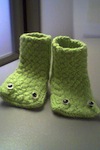 It was a revelation: With my own hands and a little patience, I could make some of the very things I’d been planning to buy — and with just as fine or a finer result. Later on would come the challenge of translating what I saw in my mind’s eye into something that could keep my neck and hands warm. For now I reveled in the discovery of this power to create.
It was a revelation: With my own hands and a little patience, I could make some of the very things I’d been planning to buy — and with just as fine or a finer result. Later on would come the challenge of translating what I saw in my mind’s eye into something that could keep my neck and hands warm. For now I reveled in the discovery of this power to create. Her note was written on an old index page of a ledger and she too adhered a bird sticker to the faded surface. She ripped the page right out of the book; I loved the spontaneous, rustic aesthetic. The postcard did in fact bear her greeting from four years ago as well as a dignified black cat on the glossy cover along with French writing — she went to Paris, too. Belated, yet thoughtful. I don’t know many people who’d realize they’d forgotten to send a postcard four years ago, then actually send it upon the moment of realization. My friends are a rare, whimsical, priceless bunch.
Her note was written on an old index page of a ledger and she too adhered a bird sticker to the faded surface. She ripped the page right out of the book; I loved the spontaneous, rustic aesthetic. The postcard did in fact bear her greeting from four years ago as well as a dignified black cat on the glossy cover along with French writing — she went to Paris, too. Belated, yet thoughtful. I don’t know many people who’d realize they’d forgotten to send a postcard four years ago, then actually send it upon the moment of realization. My friends are a rare, whimsical, priceless bunch.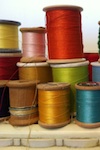 Nostalgia is not the new fad. Making things from scratch is not the new cool. Using your own elbow grease to scrub your baseboards the old-fashioned way is not just hip. It’s about living in a way that makes homes into places that care for the stranger and also the nearby friend. If in the process we rediscover the way they did things back then, it’s because no technology can ever replace what the time and trouble achieved. We will not stop hungering and thirsting for authenticity and presence.
Nostalgia is not the new fad. Making things from scratch is not the new cool. Using your own elbow grease to scrub your baseboards the old-fashioned way is not just hip. It’s about living in a way that makes homes into places that care for the stranger and also the nearby friend. If in the process we rediscover the way they did things back then, it’s because no technology can ever replace what the time and trouble achieved. We will not stop hungering and thirsting for authenticity and presence.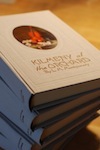 I had this notion of a swallow, the image of love and sacrifice, winging through a little arched door, such as might give on to The Secret Garden or Wonderland or perhaps even the forgotten rose bed in Burnt Norton. I thought immediately of Jean “Davy” Vanuaken, my real-life heroine of A Severe Mercy, and her chosen “low door” of obscurity and service for the love of Christ. I thought of all the beauty that has ever gone unlauded by the world, and the love that breathes life into it and the joy that rises from it like the incense of a thank offering — and I knew not only what I wanted to do, but why.
I had this notion of a swallow, the image of love and sacrifice, winging through a little arched door, such as might give on to The Secret Garden or Wonderland or perhaps even the forgotten rose bed in Burnt Norton. I thought immediately of Jean “Davy” Vanuaken, my real-life heroine of A Severe Mercy, and her chosen “low door” of obscurity and service for the love of Christ. I thought of all the beauty that has ever gone unlauded by the world, and the love that breathes life into it and the joy that rises from it like the incense of a thank offering — and I knew not only what I wanted to do, but why. 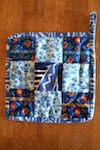 We seldom see each other’s things left undone, and we sure don’t want others to see ours. We pretend we’re finished works in public, our seams finished, our loose threads neatly trimmed. Exposing the messy undersides is one of the vulnerabilities of living with others — and one of the graces of being intimately known.
We seldom see each other’s things left undone, and we sure don’t want others to see ours. We pretend we’re finished works in public, our seams finished, our loose threads neatly trimmed. Exposing the messy undersides is one of the vulnerabilities of living with others — and one of the graces of being intimately known. As I walked past the line of garbage cans that always posted sentry duty on Sunday nights, I scanned idly for any interesting abandonments — books or furniture whose owner had left them out for neighborhood salvagers to claim. I had learned in my last two years in New York that while the city might be stingy with space, its residents were a bit more laissez-faire with belongings they could no longer use. (In fact, I once heard a five-minute presentation on the best times of the month and neighborhoods to go looking for things.)
As I walked past the line of garbage cans that always posted sentry duty on Sunday nights, I scanned idly for any interesting abandonments — books or furniture whose owner had left them out for neighborhood salvagers to claim. I had learned in my last two years in New York that while the city might be stingy with space, its residents were a bit more laissez-faire with belongings they could no longer use. (In fact, I once heard a five-minute presentation on the best times of the month and neighborhoods to go looking for things.) Those unfinished projects no longer seem tragic. They’re comforting evidence that, like me, like all of us, mom lived with gaps between intention and fruition. I have the choice, and the privilege, but not the obligation, to finish some of what she started. Though I am my mother’s uncompleted work, I think she would approve.
Those unfinished projects no longer seem tragic. They’re comforting evidence that, like me, like all of us, mom lived with gaps between intention and fruition. I have the choice, and the privilege, but not the obligation, to finish some of what she started. Though I am my mother’s uncompleted work, I think she would approve. We have settled into winter here in Virginia. The salty white streets blend right into the chalky horizon. Cold cloaks our home and seeps in through the cracks. We’re expecting snow tonight. But fragrant on my stovetop is the scent of summertime. And if I close my eyes and stand in the warm steam rising from the pot, I can remember the sultry day when the children and I canned this soup. The laughter rang loudly that afternoon, and the tomatoes splattered all over the kitchen. Months gone now, yet still I find remnants stuck to the cabinets. And I smile. Canning food is a messy, measured, raucous process and I love it.
We have settled into winter here in Virginia. The salty white streets blend right into the chalky horizon. Cold cloaks our home and seeps in through the cracks. We’re expecting snow tonight. But fragrant on my stovetop is the scent of summertime. And if I close my eyes and stand in the warm steam rising from the pot, I can remember the sultry day when the children and I canned this soup. The laughter rang loudly that afternoon, and the tomatoes splattered all over the kitchen. Months gone now, yet still I find remnants stuck to the cabinets. And I smile. Canning food is a messy, measured, raucous process and I love it. For me, pressing my brush against a canvas shakes the snow globe of monotony. It’s how I process this season of life and refill my cup. More than that, it’s the way I etch toward beauty, contemplate truth, and lasso the wayward bits of myself so I have more to give to the people I love.
For me, pressing my brush against a canvas shakes the snow globe of monotony. It’s how I process this season of life and refill my cup. More than that, it’s the way I etch toward beauty, contemplate truth, and lasso the wayward bits of myself so I have more to give to the people I love. When I was a child and my mother called me over so she could pull the measuring tape around my chest and along my torso, I didn’t think much of it. She knitted often, and making sweaters for me was a regular event. We lived in upstate New York; sweaters were necessary. Being a child, though, those sweaters didn’t mean much more than my other pieces of clothing. To me, they were just sweaters.
When I was a child and my mother called me over so she could pull the measuring tape around my chest and along my torso, I didn’t think much of it. She knitted often, and making sweaters for me was a regular event. We lived in upstate New York; sweaters were necessary. Being a child, though, those sweaters didn’t mean much more than my other pieces of clothing. To me, they were just sweaters.














